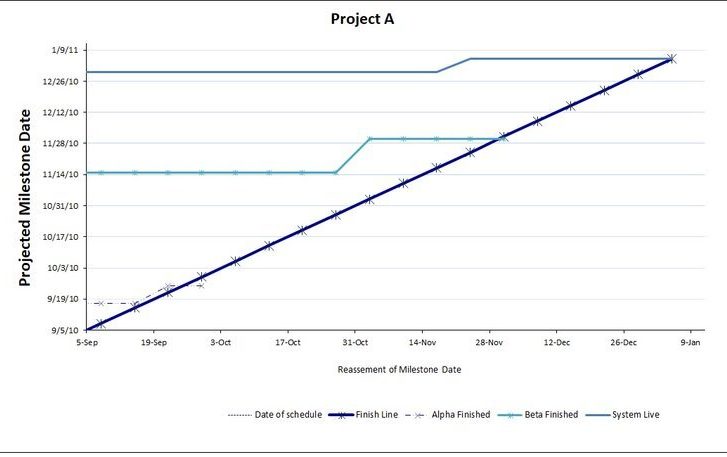Teams are tasked with collecting product development metrics because they’re easy to gather rather than useful. Or they focus on validating whether they succeeded or failed instead of measuring the behaviors that drive success. More effective new product development metrics track the critical few factors that allow project leadership to make better decisions. These metrics provide a direct line of sight between the project goal and the three to five key measures that, when defined and frequently gathered, will best predict the likelihood of achieving that goal.
Effective new product development metrics and key performance indicators track the critical few factors that allow project leadership to seed improvements throughout the organization. They provide a clear line of sight to broader, strategic goals. The key is to measure behaviors that are tied to specific initiatives that support theses goals. Our approach to metrics establishes an early warning system that helps drifting projects get back on track.
When developing new products TCGen can demonstrate improvement in product development process by looking at product development metrics. For example if your products new products aren’t satisfying customer expectation measuring customer satisfaction expectations.
Download Product Development Metrics Tools
Download Product Development Metrics Tools from Innovate Products Faster
Additional Resources
Blog Posts
Articles & Presentations
Program Management 2.0: Monitoring Project Performance (Presentation Slides)
Presentation covering how to create and update Schedule Prediction Accuracy charts and how to demonstrate program status by showing scope, cost and time in one chart. Includes Metrics for estimating progress (at the engineering task levels); Monitoring Progress (Earned Value – Scope, Cost and Time); 3 Risk Monitoring; 4 Circle Dot Charts.
Metrics: More Harm Than Good? (Slideshare)
Measurements can do as much harm as good. The key is measuring the right things. Some criteria for good metrics: Traceable to results (not measure results); Hard to game (objectively measured); Target curve that varies with time; Not related to compensation; Culturally aligned; Easy to measure?
Agile Project Management in a Waterfall World: Managing Sprints with Predictive Metrics (Slideshare)
Presentation showing how to use predictive metrics to translate Sprints and other Agile approaches to Hardware and mixed systems projects. Shows how to apply boundary conditions to better manage projects.
Software Quality Metrics Benchmark Study (Slideshare)
Report on a benchmark study to capture best practices in the application of SW metrics dashboards. Ten technology companies participated in the study.



